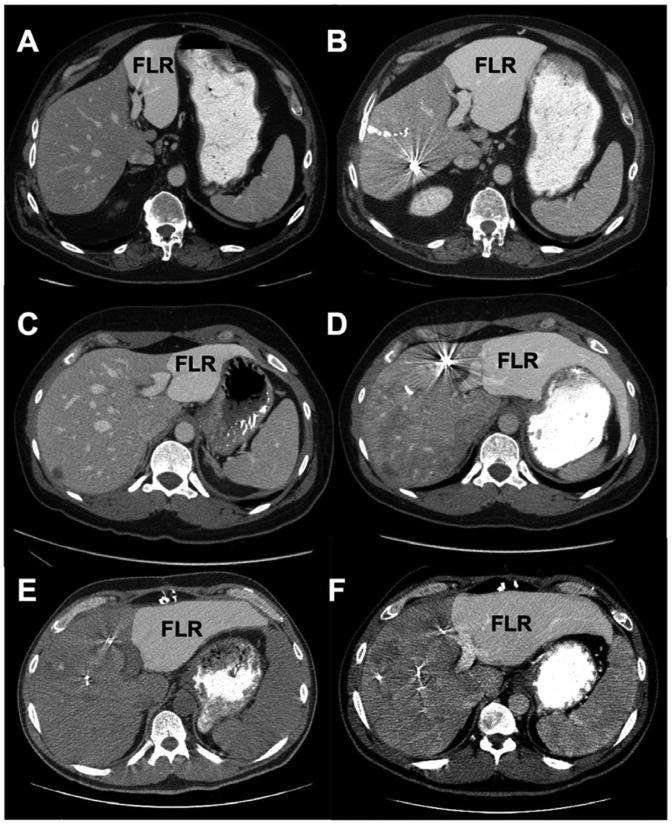Figure 4.
Examples of the clinical utility of kinetic growth rate (KGR). All patients had future liver remnant (FLR) volume ≥30% and degree of hypertrophy (DH) ≥7.5% (suggested eligibility criteria for resection); however, KGR was a more accurate predictor of outcome. (A and B) 60-year-old man. (A) On the basis of the initial CT scan, standardized FLR volume (sFLR) was estimated at 9%. (B) Final CT 35 days after right portal vein embolization (PVE) extended to segment IV indicated an sFLR volume of 33%, DH of 24%, and KGR of 4.8% per week. The patient had an uneventful postoperative course. (C and D) 37-year-old woman. (C) On the basis of the initial CT scan, sFLR volume was estimated at 15%. (D) Final CT 35 days after right PVE extended to segment IV indicated an sFLR volume of 30%, DH of 15%, and KGR of 3.0% per week. The patient had an uneventful postoperative course. (E and F) 43-year-old man. (E) On the basis of the initial CT scan, sFLR volume was estimated at 23%. (F) Final CT 70 days after right PVE extended to segment IV (required additional waiting time to attain adequate remnant volume) indicated an sFLR volume of 31%, a DH of 8%, and a KGR of 0.3% per week (determined after first CT 28 days after PVE). The patient died of postoperative liver failure.

